Are you curious about the snakes swimming in Ohio’s rivers? Then you’re in the right spot. Ohio has many different snake species, from small ones as thin as a pencil to massive ones that are over 2 feet long. But don’t let these reptiles stop you from taking a dip.
Most snakes in Ohio’s rivers aren’t venomous, and they’re more scared of you than you are of them. For instance, the northern water snake, a common sight in Ohio’s rivers, would rather flee than fight if it saw a human. Eastern ribbon snakes are also fast to hide when people are nearby.
In this article, you’ll discover three of the most snake-infested rivers in Ohio and learn practical tips to stay safe.

Water Snakes Found in Ohio Rivers
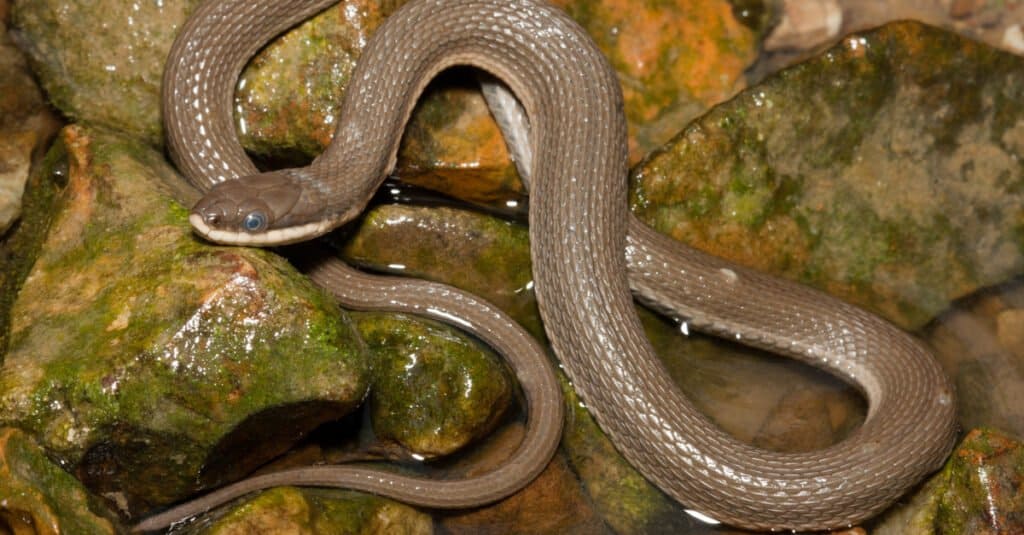
Queen snakes are one of the many water snakes living in Ohio.
©Nathan A Shepard/Shutterstock.com
What type of water snakes can be found swimming around the rivers in Ohio? Here are a few species you should know about:
- Northern Water Snake
- Plain-Bellied Water Snake
- Kirtland’s Snake
- Queen Snake
- Eastern Garter Snake
- Eastern Ribbon Snake
Northern Water Snake
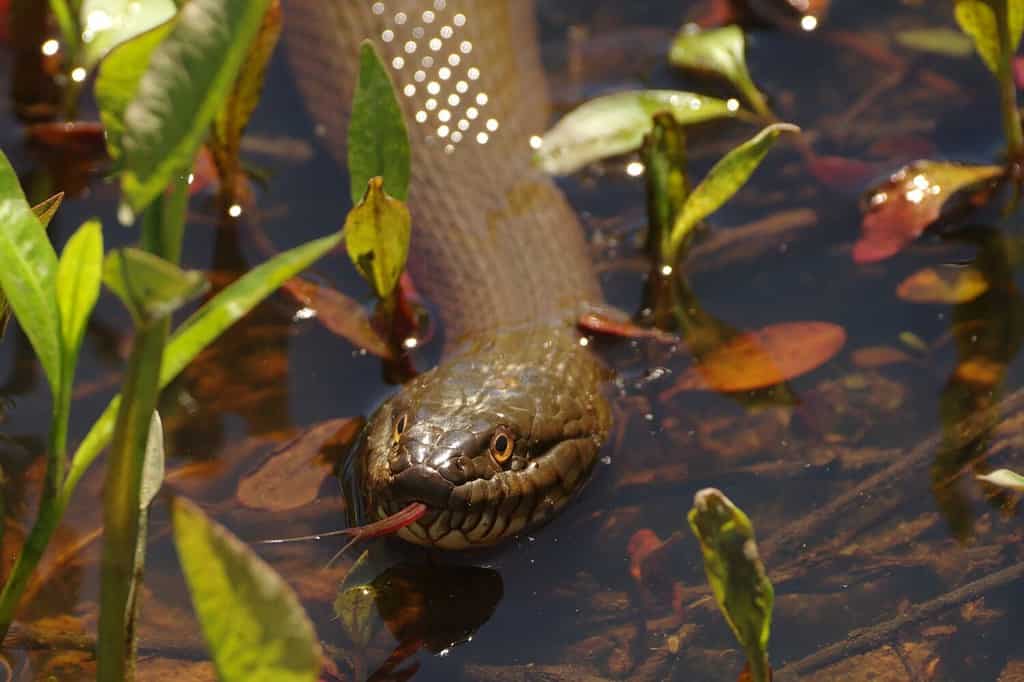
Northern water snakes can grow to be 55 inches long.
©Philip Yabut/Shutterstock.com
Measuring between 24 and 55 inches, northern water snakes come in a variety of colors. Colors range from pale grey to dark brown with reddish-brown to black bands. These snakes prefer slow-moving or standing water bodies. They’re active hunters and feed mainly on fish and amphibians. If disturbed, northern water snakes are known to flee into the water. While non-venomous, their bite can be painful due because of an anticoagulant in their saliva.
Plain-Bellied Water Snake

The plain-bellied water snakes give birth to litters of 18 young.
©iStock.com/lbolton09
Plain-bellied water snakes are found in a wide range of water sources and spend significant time on land. Their diet consists of both aquatic and terrestrial prey. They can give birth to a large number of offspring, with litters averaging 18 young. Like northern water snakes, plain-bellied water snakes release a foul-smelling musk when captured.
Queen Snake

Queen snakes can be as long as 2 feet.
©Jason Patrick Ross/Shutterstock.com
Measuring around 2 feet in length, queen snakes are common in Ohio. These snakes are easily identifiable due to their drab brown or olive green color and lighter side stripes. Queen snakes prefer moving water and are often found near river bottoms. Their diet mainly consists of crayfish. If disturbed, queen snakes will hide underwater.
Kirtland’s Snake
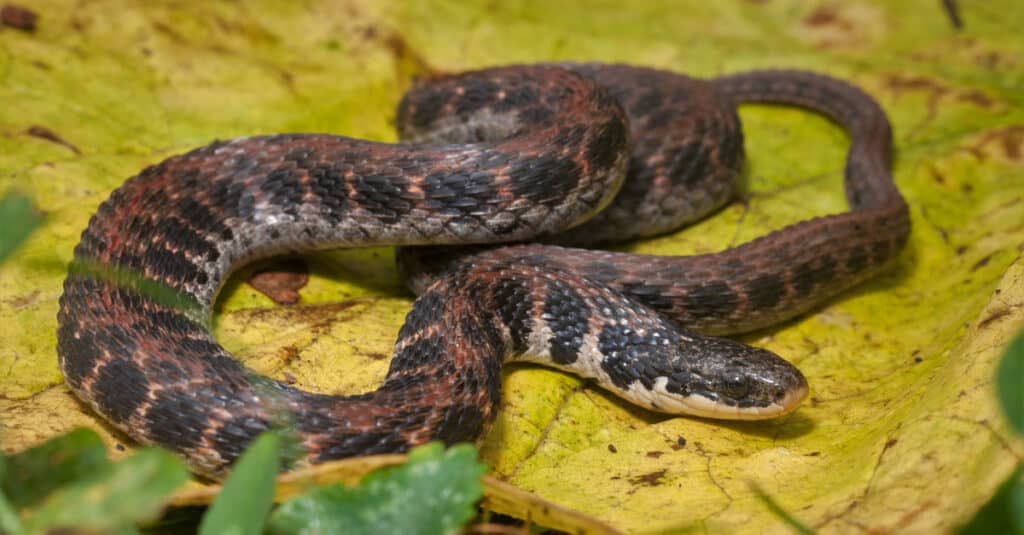
Kirtland’s snakes usually don’t grow past 18 inches, making them a smaller snake.
©Mike Wilhelm/Shutterstock.com
This small snake species usually measures between 12 to 18 inches. Kirtland’s snakes inhabit various wetland habitats and feed mainly on earthworms and slugs. Unfortunately, these snakes are endangered and face threats from habitat loss.
Eastern Garter Snake
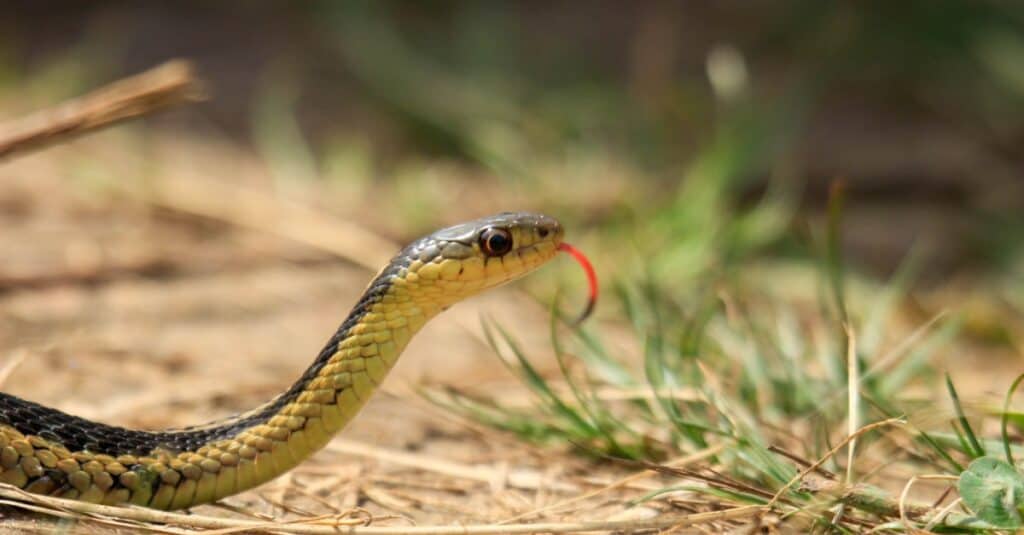
Garter snakes prefer to hand out around the grassy banks of rivers in Ohio.
©iStock.com/mynewturtle
Eastern garter snakes are common snakes found in grassy areas near freshwater. They display defensive behavior when cornered, including defecating and releasing a foul-smelling musk. Their diet is very diverse, consisting of toads, frogs, slugs, salamanders, fish, and worms.
Eastern Ribbon Snake

Eastern ribbon snakes eat a diet consisting of fish, amphibians, and invertebrates.
©iStock.com/sdbower
The eastern ribbon snakes rarely stray far from water. They inhabit marshes, floodplains, streams, and woodlands adjacent to wetlands. Eastern ribbon snakes quickly flee when disturbed and aren’t known to be aggressive. They feed mainly on amphibians, fish, and invertebrates.
Snake Safety Tips
Be aware of the possibility of encountering snakes, but don’t let it spoil your fun! If you happen to come across one, the key is to stay calm and avoid sudden movements. By acting gently, in other words, not splashing around, you can encourage the snake to swim away peacefully.
Despite some snakes having anticoagulants in their saliva that can make bites painful, none of the species mentioned above are venomous to humans. That said, most will defend themselves if threatened or cornered. That’s why it’s always best to observe these creatures from a respectful distance and not attempt to handle them.
You should also wear appropriate footwear when hiking near water snake habitats. Sturdy, closed-toe shoes or boots can prevent accidental snake bites if you accidentally step on or near a snake.
Most Snake-Infested Rivers in Ohio
Now, let’s explore some of the most snake-infested rivers in Ohio. Although none of these waterways can be considered truly infested, certain areas attract a greater variety of snake species than others.
Ohio River

The Ohio River is home to numerous snake species, including the northern and copper-bellied water snakes.
©Corey B Stevens/Shutterstock.com
The Ohio River, spanning multiple states and covering a length of 981 miles, is a vital ecosystem supporting various wildlife. It serves as a habitat for aquatic birds, small mammals, and over 160 fish species.
There are definitely enormous snakes swimming in the Ohio River, the kind that weighs over 100 pounds! During a fishing trip in the Chagrin River in Ohio, two fishermen came across a remarkable discovery that drew a lot of attention. They found a massive snake frozen in the river.
The frozen snake, believed to be a pet boa constrictor let loose, was around 14 to 16 feet long. And it weighed over 125 pounds. As far as native species swimming around the Ohio River, you can find copper-bellied water snakes, northern water snakes, and queen snakes here.
Maumee River

Northern water snakes are especially common in the Maumee River between April and June.
©Sean Pavone/Shutterstock.com
The Maumee River is a major waterway that flows into Lake Erie near Toledo, OH. This river has the largest watershed of any Great Lakes river, spanning 8,316 square miles. And there are plenty of water snakes within those waters, especially during the breeding season.
Northern water snakes are seen all over the Maumee River during breeding season between April and June. Unlike many snake species, they give birth to live young instead of laying eggs. The offspring, typically numbering between 4 and 99, are born in the late summer and fall.
While they lack venom, northern water snakes aren’t a species you want to get close to. These reptiles have short tempers and have a fierce bites if provoked. They possess backward-facing teeth that can easily puncture the skin. Additionally, they have defensive mechanisms such as musking and vomiting their recently consumed fish.
Cuyahoga River

The Cuyahoga River is home to nine snake species, including queen snakes.
©SNEHIT PHOTO/Shutterstock.com
The Cuyahoga River runs for about 22 miles, with numerous tributaries, including Tinkers Creek and Furnace Run. Despite its polluted past, the river has made a remarkable recovery, resulting in an increase in snake populations and the return of over 40 species of fish.
The Cuyahoga Valley, the valley through which the Cuyahoga River flows, is home to nine snake species. There’s the black rat snake, garter snakes, queen snakes, ribbon snakes, and more. The queen snake, a small nonvenomous water snake, loves hunting crayfish. Keep an eye out for them near stream debris or basking on low-hanging branches.
Summary of the Most Snake-Infested Rivers in Ohio
| Rivers in Ohio | Common Snake Species |
|---|---|
| Ohio River | Copper-bellied water snakes Northern water snakes Queen snakes |
| Maumee River | Northern water snakes |
| Cuyahoga River | Black rat snakes Garter snakes Queen snakes Ribbon snakes |
Other Animals Found Near Rivers in Ohio
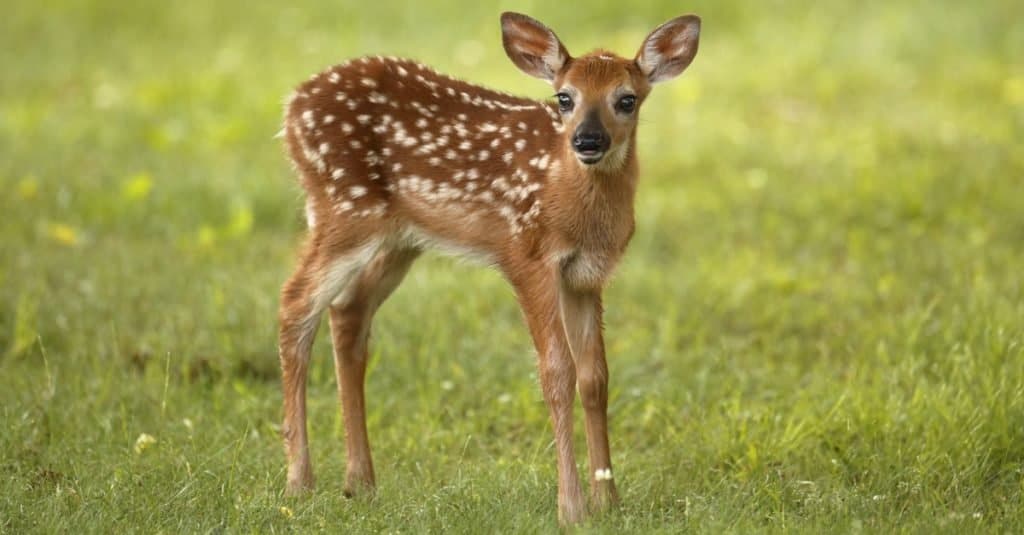
White-tailed deer are a common sight along many of Ohio’s rivers.
©Paul Tessier/Shutterstock.com
Ohio is home to over 20 snake species, both venomous and non-venomous. But that’s not all! Here are a few more critters you can find in and around rivers in Ohio:
- White-tailed Deer
- Beavers
- River Otters
- Great Blue Heron
- Bald Eagles
- Bobcats
- Mink
- Mollusk species, including mussels
- Muskrats
- Turtles
- Waterfowl
- Black Bears
- American Beavers
- Wild Turkeys
- Coyotes
- Great Horned Owls
- Red-headed Woodpeckers
There are over 80 species of mussels in Ohio. Freshwater mussels play a big role in maintaining a healthy river ecosystem by filtering water, providing habitat for other organisms, and serving as a food source. And let’s not forget the crustaceans, including the famous blue crawfish.
The blue crawfish is typically found in western Pennsylvania and West Virginia. But the exotic-looking crustacean was recently discovered in Ohio. The first documented record of the blue crawfish in Ohio was confirmed after researchers received photos of the species from turkey hunters. The hunters spotted the blue crayfish in Monroe County, OH.
The photo featured at the top of this post is © IKT COLLECTIONS/Shutterstock.com
Thank you for reading! Have some feedback for us? Contact the AZ Animals editorial team.






